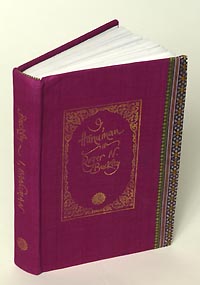|
This is an archived article.
For the latest news, go to the Advance Homepage
For more archives, go to the Advance Archive/Search Page. |
|
|
Historical Novel Explores Race,
Race, identity, and nationality in the British army in the 19th century are explored in a new historical novel by history professor Roger Buckley. I, Hanuman is based on the real-life story of Bedasee Singh, an Indian soldier who served in the British army in India during the British colonial period. "One day, Singh has an epiphany and realizes he is fighting on the wrong side," Buckley says. "He decides to rebel against the British, but he does it in a distinctive way: He dresses from head to toe as Lord Hanuman, the monkey god of India and the hero of the Hindu epic The Ramayana, and attacks the British on horseback."
Buckley, who is also director of the Asian American Studies Institute, discovered the story while reading letters in a British army journal written by four officers who witnessed the attack. "They dismissed Singh as an Indian fanatic," Buckley says, "but as soon as I read the letters, I knew exactly what he was doing - reliving the story of The Ramayana, in which Hanuman saves India from a foreign demon - in this case, the British." He notes that many people in India, whether they're Hindus, Muslims, Jews, or Christians know and love the story. The core of the novel is Singh's memoir, which he is inspired to write as an old man. "The interesting side feature is that he was blinded when the British shot him," Buckley says. "The question is, if he is blind, how can he write his memoirs?" He dictates his life story to his lover, a woman who is also a freedom fighter. But unbeknown to him, she edited his memoirs, and put in her own comments, Buckley says. "Her interspersing voice appears throughout the novel in italics, leaving her own literary mark on the memoir," Buckley says. "Although her character is fictitious, it gives the story an important gender dimension. There were female revolutionaries during that time, and I wanted to underscore that." The book, published in April by Writers Workshop in Calcutta, India, is the second in a trilogy entitled, Collaboration and Resistance: Three Chose Rebellion. Buckley says his fiction is rooted in his scholarship. A specialist on the history of the British army, Buckley has written several books on the subject, all heavily based on archival work. For his last major work, Buckley visited 39 public and private archives in 10 countries. In the course of his research, he found the stories of three men and decided to write about them. "They all rebel," Buckley says. In the first novel of the trilogy, Congo Jack, the main character is an African soldier. In the third book, yet to be published, the character is an Irish Catholic. The publishing company for I, Hanuman, says Buckley, is "run by a rebel. He is a rebel against what he calls standardization." As a result, all of his books are handmade. The books are covered in woven sari cloth with gold embossing. The book is published in 20 different sari colors. Each is an artifact: hand stitched, hand bonded, and hand pasted. Buckley received his doctorate in British Empire history from McGill University in Montreal. His other books include The British Army in the West Indies: The Military and Society in the Revolutionary Age (Florida, 1998); and Slaves in Red Coats (Yale, 1979). |

